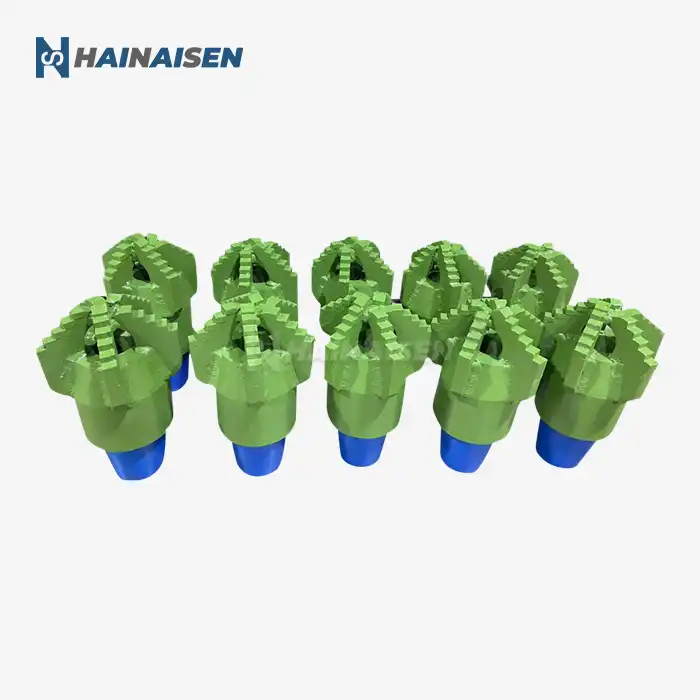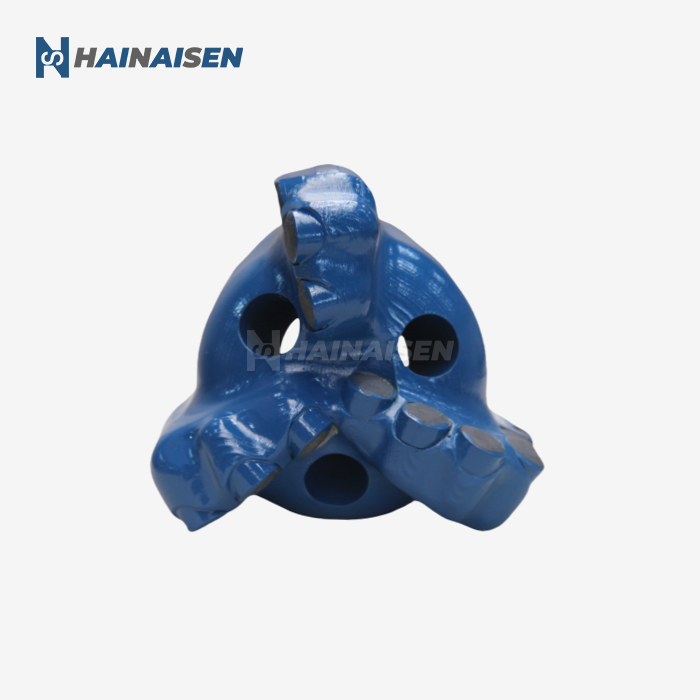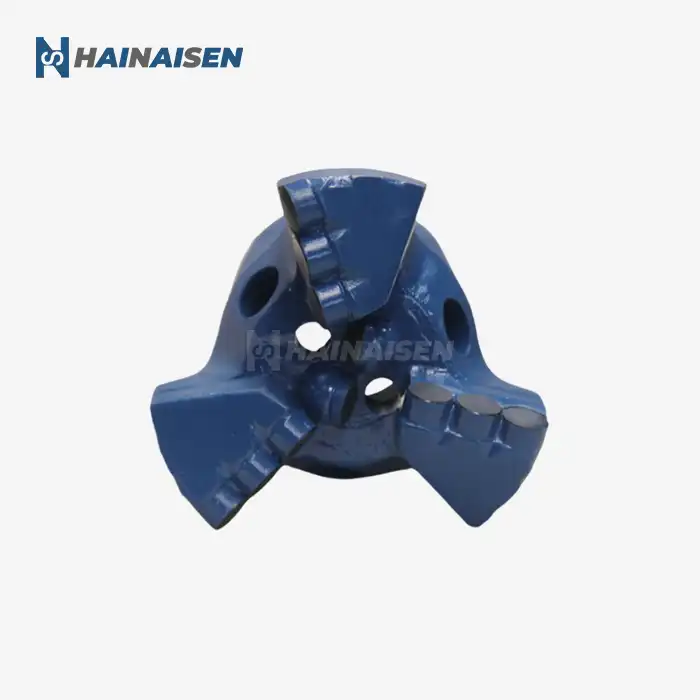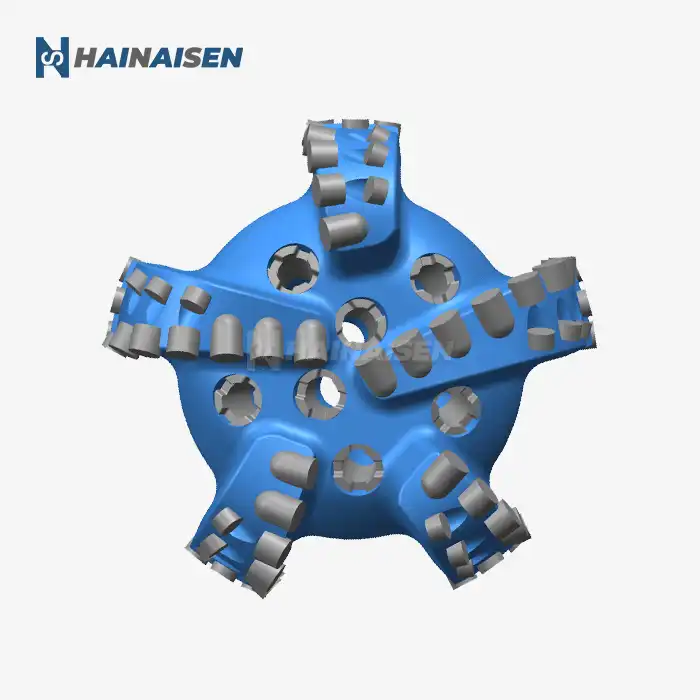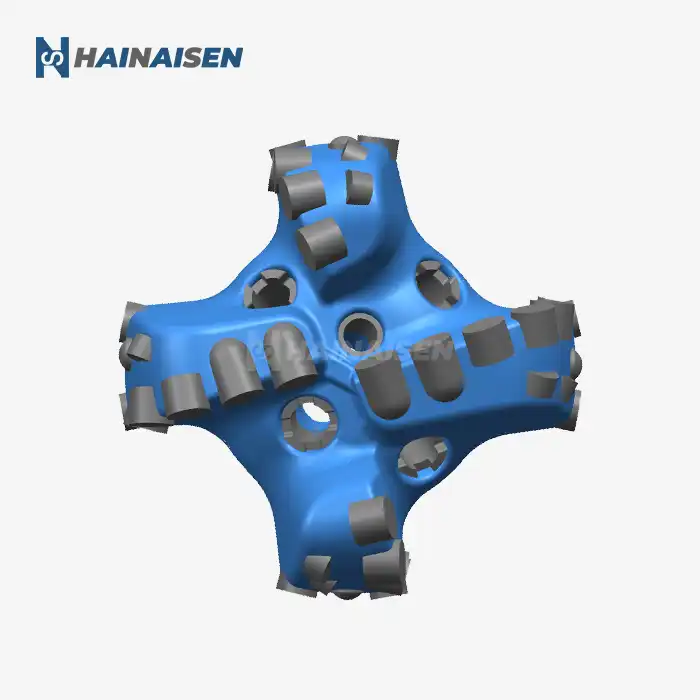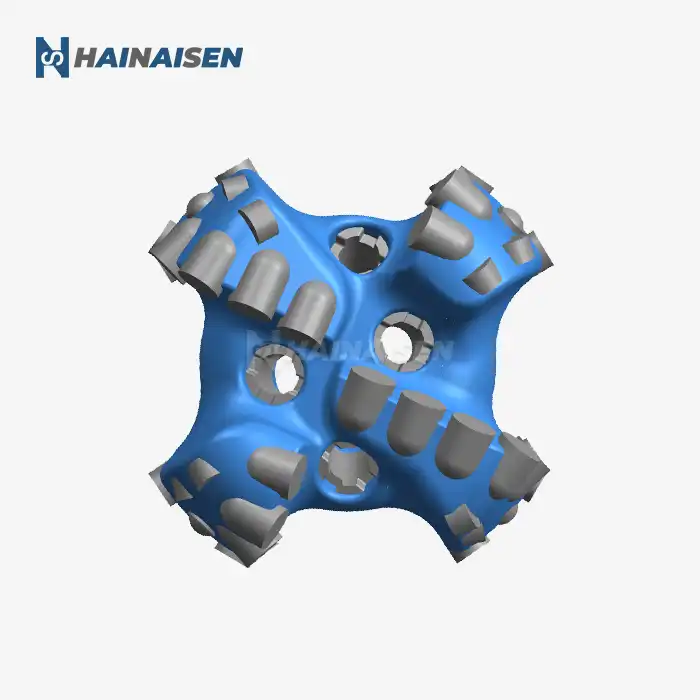Essential Cleaning Techniques for PDC Bits
Proper cleaning is the foundation of effective PDC Flat Top Sintered Drill Bit maintenance. Following these techniques will help preserve your bit's cutting structure and overall performance:
Post-Run Cleaning
After each run, it's crucial to clean your bit thoroughly. Begin by removing any large debris or rock fragments stuck between the cutters. Use a high-pressure water jet to flush out smaller particles and drilling mud residue. For stubborn buildup, a soft-bristled brush can be employed, but be cautious not to damage the cutters or matrix material.
Chemical Cleaning Solutions
For more thorough cleaning, consider using specialized chemical solutions designed for PDC bits. These solutions can help dissolve stubborn mud cake and remove hydrocarbon residues without compromising the bit's integrity. Always follow the manufacturer's instructions and safety guidelines when using chemical cleaners.
Ultrasonic Cleaning
Ultrasonic cleaning devices are quite useful for cleaning with a finer degree of accuracy. To eliminate even the tiniest particles, these devices employ high-frequency sound waves to generate tiny bubbles that explode on the surface of the bit. Cleaning complicated bit profiles and other hard-to-reach locations is where this approach really shines.
Drying and Inspection
After cleaning, thoroughly dry the bit using compressed air or clean, lint-free cloths. Once dry, conduct a detailed visual inspection to ensure all debris has been removed and no damage has occurred during the cleaning process, especially for PDC Flat Top Sintered Drill Bit.

Identifying Wear Patterns: When to Replace?
Regular inspection of your PDC Flat Top Sintered Drill Bit is crucial for determining when replacement is necessary. Understanding common wear patterns will help you make informed decisions about bit replacement and optimize your drilling operations.
Cutter Wear
Inspect the PDC cutters for signs of wear, such as:
- Flat spots or excessive rounding on the cutting edge
- Chipping or breakage of the diamond layer
- Exposure of the tungsten carbide substrate
If more than 30% of the cutters show significant wear, it's time to consider replacing the bit.
Matrix Body Erosion
Examine the matrix body for signs of erosion, particularly around the cutter pockets and hydraulic channels. Excessive erosion can lead to cutter loss and compromised hydraulic efficiency. If the matrix body shows substantial wear, replacement may be necessary.
Gauge Pad Wear
Check the gauge pads for wear and damage. Worn gauge pads can result in undersized holes and potential stability issues. If the gauge pad wear exceeds 1/8 inch (3.175 mm), consider replacing the bit.
Nozzle Condition
Inspect the nozzles for signs of erosion or blockage. Damaged or clogged nozzles can significantly impact hydraulic performance and cleaning efficiency. Replace worn nozzles or consider bit replacement if nozzle damage is extensive.
Overall Bit Profile
Assess the overall bit profile for any significant deviations from its original shape, especially in PDC Flat Top Sintered Drill Bit. A severely altered profile can lead to reduced drilling efficiency and potential wellbore quality issues. If the bit profile has changed dramatically, replacement is advisable.

Storage Best Practices to Extend Bit Life
Proper storage of your PDC Flat Top Sintered Drill Bit is crucial for maintaining its performance and longevity between drilling operations. Implement these storage best practices to protect your investment:
Cleaning Before Storage
Before storing your bit, ensure it's thoroughly cleaned using the techniques discussed earlier. Remove all drilling fluid, cuttings, and debris to prevent corrosion and contamination during storage.
Protective Coating Application
To preserve the bit, apply a thin coating of coating or oil. This coating is particularly useful in damp climates for protecting against rust and corrosion. Use only a substance that is safe to use with PDC materials; do not coat the cutters.
Climate-Controlled Environment
Store your bits in a clean, dry, and climate-controlled environment whenever possible. Extreme temperatures and humidity can adversely affect the bit's components. Aim for a storage area with temperatures between 50°F and 80°F (10°C to 27°C) and relative humidity below 60%.
Proper Positioning
Store PDC bits in an upright position to prevent damage to the cutting structure. Use specially designed bit stands or racks to keep the bits secure and properly oriented. Avoid stacking bits directly on top of each other, as this can lead to cutter damage.
Regular Inspection During Storage
Periodically inspect stored bits for signs of corrosion, damage, or degradation. This practice allows you to address any issues promptly and ensure the bits are ready for use when needed.
Rotation Schedule
Implement a rotation schedule for stored bits to ensure even weight distribution and prevent long-term stress on specific areas. This is particularly important for larger bits or those stored for extended periods.
Proper Documentation
Maintain detailed records of each bit's usage history, maintenance activities, and storage conditions. This information can be valuable for tracking performance trends and making informed decisions about bit selection and replacement.
By following these storage best practices, you'll significantly extend the life of your PDC Flat Top Sintered Drill Bits and ensure they're ready for optimal performance when called into service.
Conclusion
The performance and lifetime of your PDC Flat Top Sintered Drill Bit may be greatly enhanced with proper maintenance. Drilling operations may be optimized and expenses can be reduced by following this guide's storage best practices, methods for identifying wear patterns, and cleaning strategies from a trusted PDC Flat Top Sintered Drill Bit supplier.
Because we care about our customers, Shaanxi Hainaisen Petroleum Technology Co., Ltd. only sells high-quality PDC drill bits and offers full customer service. You will get high-quality items that are made to fit your drilling needs because we are very good at research, development, and production. You can get help from our team with customized solutions and expert support whether you work in coal mine, oil and gas extraction, or geological surveying.
Don't let subpar bit maintenance hinder your drilling operations. Invest in quality PDC Flat Top Sintered Drill Bits and implement these maintenance practices to drive your projects forward. Contact us today to learn more about our products and how we can help optimize your drilling performance.
FAQ
1. How often should I clean my PDC Flat Top Sintered Drill Bit?
Clean your bit after each run to maintain optimal performance. For bits in storage, conduct periodic inspections and cleanings every 3-6 months.
2. Can I use regular soap to clean my PDC bit?
While mild soap can be used for basic cleaning, it's best to use specialized cleaning solutions designed for PDC bits to ensure thorough cleaning without damaging the bit components.
3. How long can I expect my PDC Flat Top Sintered Drill Bit to last?
The lifespan of a PDC bit varies depending on formation characteristics, drilling parameters, and maintenance practices. With proper care, bits can last for multiple runs, potentially drilling thousands of feet.
4. Are there any special considerations for storing PDC bits in extreme climates?
In extreme climates, consider using dehumidifiers or climate-controlled storage units to protect bits from temperature fluctuations and humidity. Additionally, increase the frequency of inspections to catch any potential issues early.
PDC Flat Top Sintered Drill Bit Suppliers | HNS
Looking for high-quality PDC Flat Top Sintered Drill Bits? Shaanxi Hainaisen Petroleum Technology Co., Ltd. is your trusted manufacturer and supplier. Our advanced production facilities and dedicated R&D team ensure that you receive top-of-the-line drilling tools tailored to your specific needs.
Whether you're a large oil service company requiring stringent quality standards or a water well drilling team seeking cost-effective solutions, we have the expertise and products to meet your demands. Our bits are available in sizes ranging from 50mm to 160mm, with customizable features to suit various formation types and drilling conditions.
Don't settle for subpar drilling equipment. Upgrade your operations with HNS PDC Flat Top Sintered Drill Bits. Contact us today at hainaisen@hnsdrillbit.com to discuss your requirements and receive a personalized quote. Let us help you maximize your drilling efficiency and reduce operational costs.
References
1. Smith, J. (2022). Advanced PDC Bit Maintenance Techniques for Extended Bit Life. Journal of Drilling Technology, 45(3), 112-128.
2. Johnson, R., & Williams, T. (2021). Wear Pattern Analysis in PDC Drill Bits: A Comprehensive Guide. International Journal of Petroleum Engineering, 18(2), 76-92.
3. Brown, A. (2023). Optimizing Storage Practices for Drilling Tools in Harsh Environments. Oilfield Technology Magazine, 56(4), 45-52.
4. Davis, M., & Thompson, L. (2022). The Impact of Proper Maintenance on PDC Bit Performance: A Case Study. SPE Drilling & Completion, 37(1), 62-75.
5. Wilson, E. (2021). Advancements in PDC Bit Cleaning Technologies: A Review. Journal of Petroleum Science and Engineering, 196, 108031.
6. Lee, S., & Garcia, C. (2023). Long-term Storage Effects on PDC Bit Integrity: Best Practices and Recommendations. Drilling Contractor, 79(2), 88-95.




